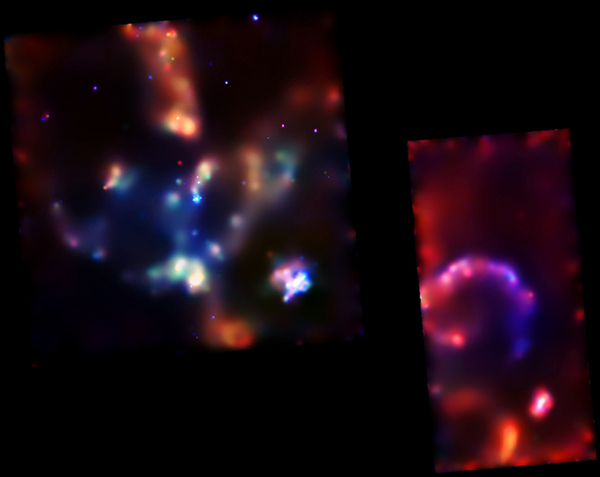

|

|
|
||||
|
The Tarantula Nebula (30 Doradus): An
active star-forming region 160,000 light years from Earth in the
Large Magellanic Cloud in the constellation Dorado. Caption: Chandra's image shows the drama of star formation and evolution as it is being played out in a nearby galaxy. At least 11 extremely massive stars with ages of about 2 million years are detected in the bright star cluster in the center of the primary image (left panel). The brightest source in this region is Mk 34, a 130 solar-mass star located slightly to the lower left of center. On the lower right of this panel is the supernova remnant N157B, with its central pulsar. Two off-axis ACIS-S chips (right panel) show the large shell-like supernova remnant SNR N157C. In the image, lower energy X-rays appear red, medium energy green and high-energy are blue. Scale: Left panel is 16 arcmin on a side. Right panel is 8 by 16 arcmin. Chandra X-ray Observatory ACIS Image
CXC operated for
NASA by the Smithsonian Astrophysical
Observatory
|
|
|